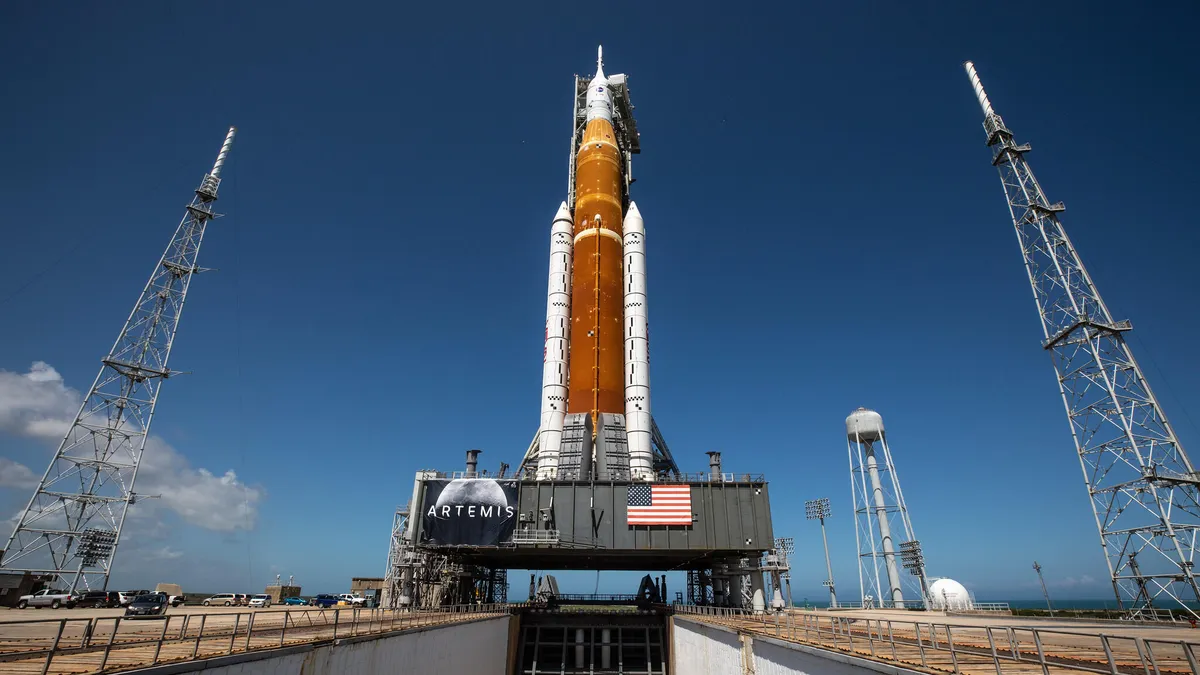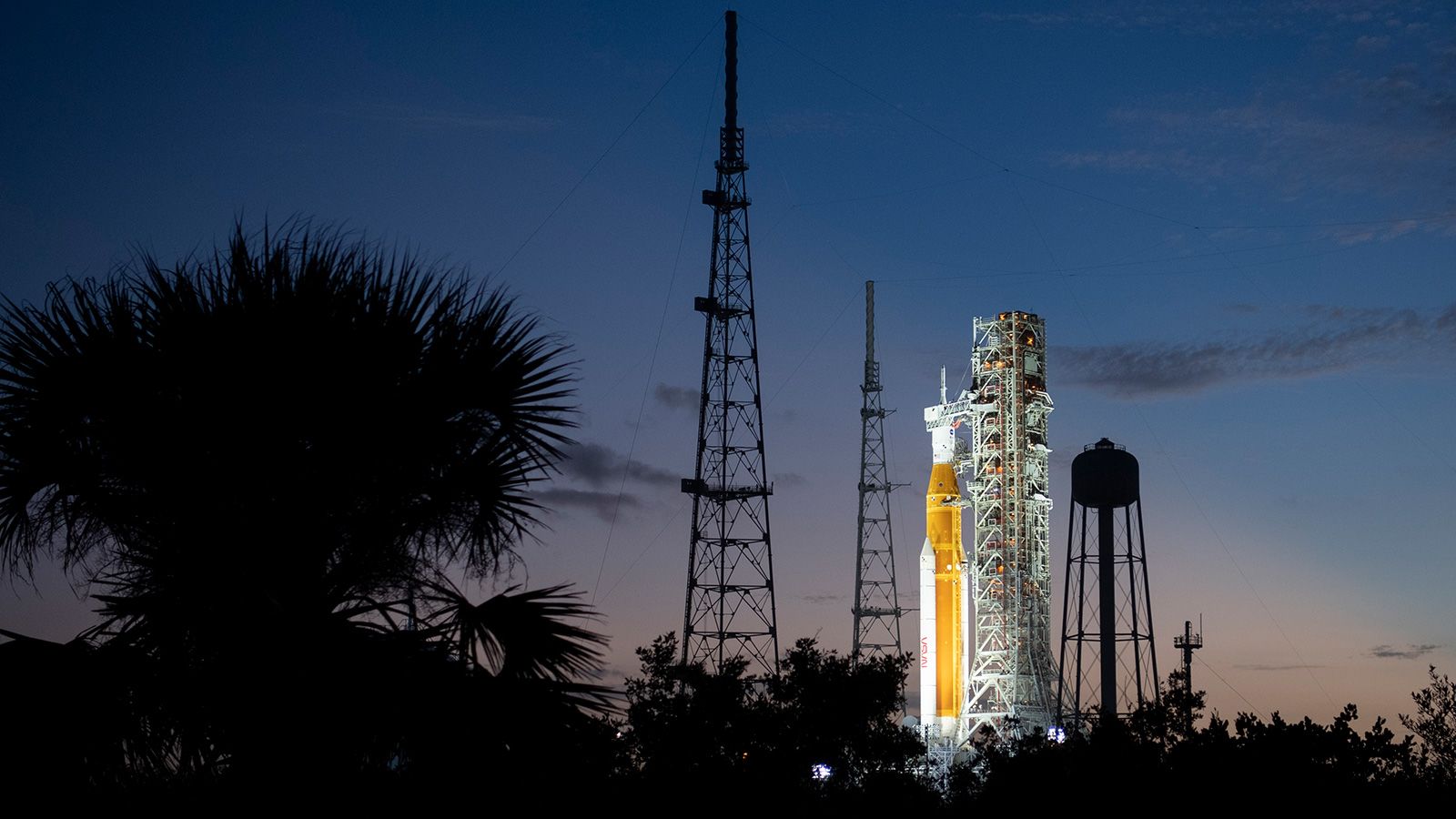
(Image credit- Kiplinger) A group of great brai...
news-extra-space

 Image: NASA[/caption]
NASA said in a statement on Tuesday that it was still keeping an eye on Tropical Storm Nicole and has decided to reschedule the launch of the Artemis I mission for Wednesday, November 16, subject to both staff safety and post-storm inspections.
The workforce will be able to attend to their personal requirements and those of their households if the intended launch date is changed, and it will provide the logistics team enough time to prepare for the storm and return to launch status.
Kennedy is currently in a HURCON (Hurricane Condition) III status, which calls for safeguarding the center's buildings, possessions, and machinery. It also has a ride-out team ready to stay at Kennedy during the storm in a secure location to keep a watchful check on the flight hardware for the Artemis I mission.
Image: NASA[/caption]
NASA said in a statement on Tuesday that it was still keeping an eye on Tropical Storm Nicole and has decided to reschedule the launch of the Artemis I mission for Wednesday, November 16, subject to both staff safety and post-storm inspections.
The workforce will be able to attend to their personal requirements and those of their households if the intended launch date is changed, and it will provide the logistics team enough time to prepare for the storm and return to launch status.
Kennedy is currently in a HURCON (Hurricane Condition) III status, which calls for safeguarding the center's buildings, possessions, and machinery. It also has a ride-out team ready to stay at Kennedy during the storm in a secure location to keep a watchful check on the flight hardware for the Artemis I mission.
 Currently, NASA intends to keep the 98-meter-tall SLS rocket on the launchpad. However, if the weather conditions deteriorate noticeably, NASA may decide to roll the rocket back to the Vehicle Assembly Building (VAB), which is roughly four miles from the launchpad, as it did with Hurricane Ian.
NASA moved the SLS back to the launchpad last Friday after it spent the entire month of October in the VAB, first for protection from Hurricane Ian and then to address a number of technical concerns.
The space agency claims that the rocket is built to resist winds of up to 85 mph (74.4 knots) at a height of 60 feet. Forecasts for the present wind speed are within that range.
Currently, NASA intends to keep the 98-meter-tall SLS rocket on the launchpad. However, if the weather conditions deteriorate noticeably, NASA may decide to roll the rocket back to the Vehicle Assembly Building (VAB), which is roughly four miles from the launchpad, as it did with Hurricane Ian.
NASA moved the SLS back to the launchpad last Friday after it spent the entire month of October in the VAB, first for protection from Hurricane Ian and then to address a number of technical concerns.
The space agency claims that the rocket is built to resist winds of up to 85 mph (74.4 knots) at a height of 60 feet. Forecasts for the present wind speed are within that range.
 To prevent rainwater from entering the Orion spacecraft, which is perched atop the rocket, the hatches have been sealed. Engineers have also secured the crew access arm on the mobile launcher and installed a hard cover to the launch abort system window as further safety precautions, according to NASA.
When it finally launches, Artemis I will serve as a trial run for the crewed Artemis II mission that will follow the same orbital path around the moon. If all goes well, the Artemis III mission, which might launch as early as 2025, will attempt to land the first woman and first person of color on the lunar surface.
To prevent rainwater from entering the Orion spacecraft, which is perched atop the rocket, the hatches have been sealed. Engineers have also secured the crew access arm on the mobile launcher and installed a hard cover to the launch abort system window as further safety precautions, according to NASA.
When it finally launches, Artemis I will serve as a trial run for the crewed Artemis II mission that will follow the same orbital path around the moon. If all goes well, the Artemis III mission, which might launch as early as 2025, will attempt to land the first woman and first person of color on the lunar surface.
Leave a Reply






